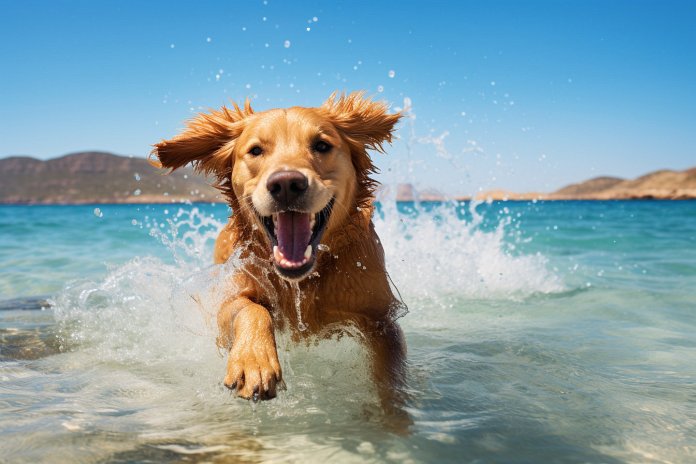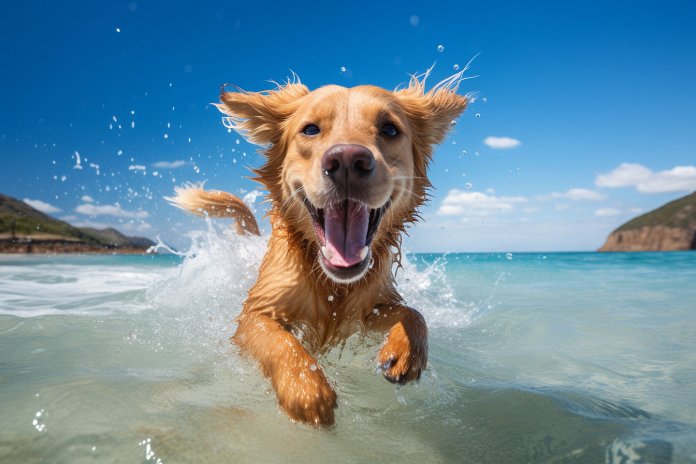
If you’re planning to take your dog to the beach, lake, or pool for the first time, you may be wondering if they can swim. Contrary to popular belief, dogs can’t naturally swim, even though they may do a doggy paddle when in the water. While some dogs are natural swimmers, others feel safer on land.
Signs Your Dog Loves Swimming
There is no surefire way to determine if your dog is a natural swimmer, but certain factors can indicate their inclination. Some breeds are physically more suited for swimming due to their strong limbs and athleticism. Breeds like the Newfoundland, Labrador, and Portuguese Water Dog are often comfortable in the water. However, some dogs within these breeds may still fear the water or struggle to stay afloat.
Low, sturdy breeds like Bulldogs and Dachshunds may have difficulty keeping their heads above water, while small breeds like Chihuahuas may be competent swimmers but sensitive to cold water.
Body Language
Your dog’s body language can reveal if they dislike the water, such as whining, shaking, low tail carriage, raised hair on their back, dropped ears, and whimpering. Other signs include refusing to enter the water, staying away from it, and continuous shaking.
The Science of the Doggy Paddle
Several breeds have historically been bred for their water abilities, such as the Newfoundland and Labrador Retrievers. A study conducted by Dr. Frank Fish and his colleagues analyzed the swimming mechanics of dogs of different breeds. They found that dogs swim with a gait similar to a trot on land, but with faster leg movements and greater range of motion.
Teaching Your Dog to Swim
Before teaching your dog to swim, consult with your vet to ensure they are physically capable. Some dogs may have health issues that affect their ability to swim. Additionally, if your dog is anxious or fearful of water, take a slow and patient approach. Encourage them to follow you into the water and reward them with treats and praise. For dogs with a retrieving instinct, start in shallow water and gradually move to deeper areas. Never force your dog to do something they’re uncomfortable with or frightened of.
“Swimming may come naturally to some dogs, but for others, it’s a fear they’d rather leave on dry land.”

Tips & Things to Know
1️⃣ Not all dogs are natural swimmers, so it’s important to assess your dog’s comfort level in the water before encouraging them to swim. Some breeds are physically more capable of swimming, while others may have a fear of water or struggle to stay afloat.
2️⃣ Pay attention to your dog’s body language to determine if they enjoy swimming or not. Signs of distress or discomfort include whining, shaking, low tail carriage, raised hair, dropped ears, and whimpering. If your dog shows these signs, they may not like swimming and should not be forced into the water.
3️⃣ If you want to teach your dog to swim, consult with your vet first to ensure they are physically capable. Take a slow and patient approach, starting in shallow water and gradually progressing to deeper water. Encourage your dog to swim by going into the water yourself and offering rewards and praise. However, never force your dog to swim if they are uncomfortable or fearful.
Frequently Asked Questions, Answered ✅
1. Can all dogs naturally swim?
– No, dogs cannot naturally swim. While some dogs may be able to dog paddle in the water, it does not mean they can swim safely or comfortably for an extended period of time.
2. How can you tell if your dog is a natural-born swimmer?
– There is no definitive rule, but certain factors can indicate whether a dog is more inclined to enjoy swimming. Some breeds, like the Newfoundland, Labrador, or Portuguese Water Dog, are generally more physically capable in the water. However, even within these breeds, some dogs may have a fear or discomfort of water.
3. What are some signs that a dog doesn’t like swimming?
– Signs that a dog doesn’t like swimming include refusing to enter the water, staying away from water, shaking, whining, dropped ears, and whimpering.
4. How do dogs swim?
– Dogs swim using a gait similar to a trot on land. Their legs move faster and have a greater range of motion than when they are trotting on land. Interestingly, the study found very little variation in swimming actions between different breeds.
5. How can you teach your dog to swim?
– Before teaching your dog to swim, consult with your vet to ensure there are no health issues or physical limitations. Take a patient and gradual approach, starting in shallow water and rewarding your dog with treats and praise when they follow you into the water. Never force your dog to swim if they are uncomfortable or frightened.